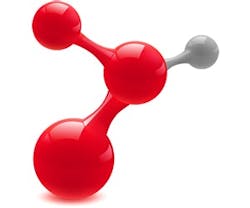A Stable Way to Store Thermal Energy?
Researchers at MIT have revealed that a molecule known as fuvalene diruthenium can work to store and release thermal energy on demand. These findings could become the beginning of a new rechargeable battery utilizing heat instead of electricity.
Fuvalene diruthenium undergoes structural transformation while absorbing sunlight, placing it into a high-energy state where it can remain stable indefinitely. It can then be triggered by a catalyst or heat to snap back to the original shape, releasing heat in the process.
Potentially this process makes it possible to produce a rechargeable heat battery that can repeatedly store and release heat gleaned from sunlight or other thermal sources.
Jeffrey Grossman, Carl Richard Soderberg Associate Professor of Power Engineering in the Department of Materials Science and Engineering, says “"It takes many of the advantages of solar-thermal energy, but stores the heat in the form of a fuel. It's reversible, and it's stable over a long term. You can use it where you want, on demand. You could put the fuel in the sun, charge it up, then use the heat, and place the same fuel back in the sun to recharge."
The only issue is with the rarity and cost of the ruthenium, which Grossman cites as a “dealbreaker.” But now that the way fuvalene diruthenium works is understood, there is a good chance that other materials can be found that exhibit the same thermal behaviors.
This research could pave the way for a new environmentally-appealing stable way to store thermal energy, which will enable new technology and options for architectural pursuits and innovations.
